Crabs are fascinating creatures with incredible diversity. In fact, there are around 5,000 different species of crabs, including both true crabs and hermit crabs. Unlike true crabs, hermit crabs lack a hard shell and rely on discarded shells for protection. All crabs are uniquely adapted to their various environments, skillfully navigating their surroundings with agility and grace. But just how smart are crabs? Let’s explore what we know about their intelligence so far!
Learning and Memory

Crabs prefer the speed and ease of walking sideways.
©davemhuntphotography/Shutterstock.com
Edward Pope and his colleagues at Swansea University wanted to see how smart crabs are and discovered that shore crabs (Carcinus maenas) can learn and remember their way through complex mazes. They trained 12 crabs to navigate a complex underwater maze in an aquarium, where only one path led to success. A crushed mussel awaited at the end for the crabs who successfully navigated through the correct path.
The crabs were trained once a week to navigate the maze. It took three weeks for them to complete the maze flawlessly, but their performance improved with each training session. Once the crabs had mastered the maze, Pope and his team decided to test their memory retention. They waited an additional two weeks before challenging the crabs with the maze again.
This time, they placed the crabs into the maze without a tasty reward to entice them. Surprisingly, all 12 trained crabs completed the maze in just eight minutes! A group of untrained crabs was also introduced into the same maze, but it took them an average of 39 minutes to navigate through it. Not only did the trained crabs remember the correct path from their past training sessions, but they also navigated the maze much faster than their untrained counterparts.
Long-Term Memory and Application
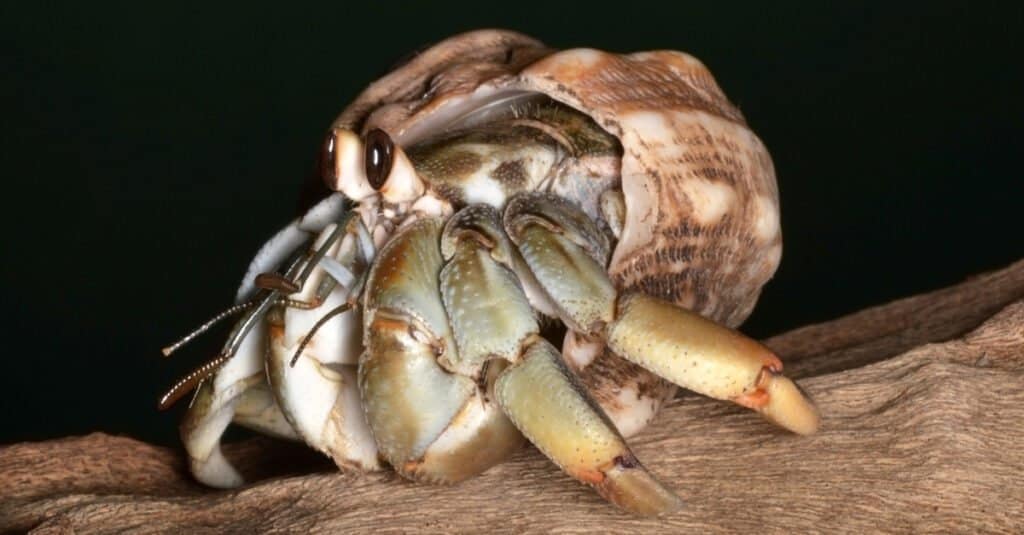
Pacific hermit crabs are also called Ecuadorian hermit crabs.
©Guillermo Guerao Serra/Shutterstock.com
As we’ve seen so far, crabs also have great memories. The Chasmagnathus granulatus crab, for example, can remember the exact spot where it was attacked by a seagull. In mammals, this kind of memory usually requires the use of complex brain regions. However, this crab manages to do it with just a few neurons in its tiny brain! In addition, these crabs can quickly learn which elements in their environment are dangerous or harmless — even when they look exactly the same. This demonstrates that crabs learn quickly and can apply that knowledge to their own individual situations.
In another study, Pacific hermit crabs (Coenobita compressus) showed that they are capable of long-term memory as well. Researchers placed a tasty new food item in a specific location and taught the crabs where to find it. The crabs were trained in just one session with 11 trials. They were tested again after five minutes, and then after several days. Incredibly, the crabs could remember the location of the food even after seven days — even when the actual food was no longer there!
Decision Making
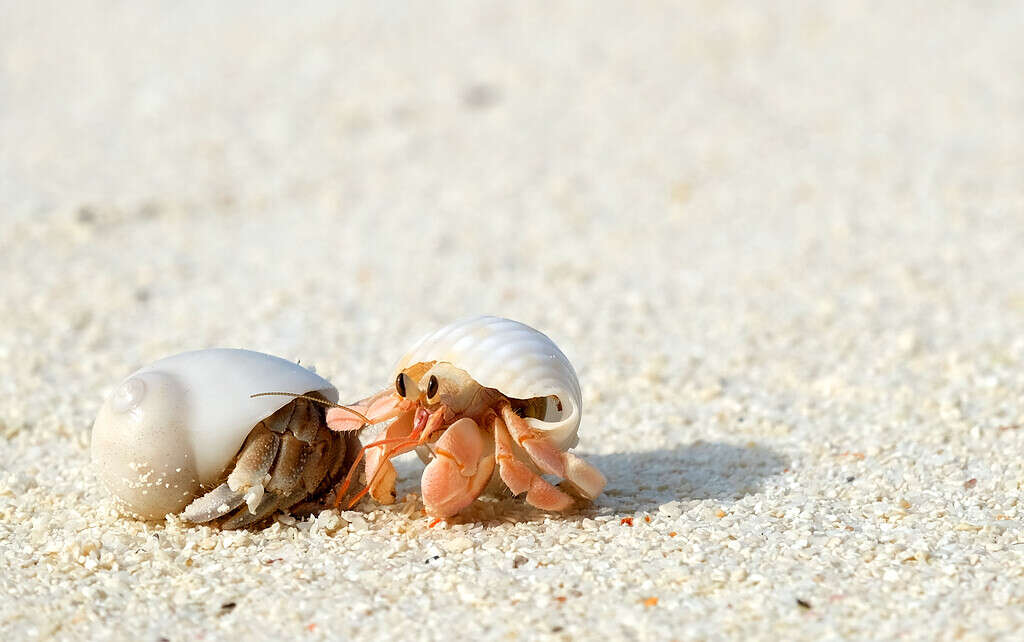
Hermit crabs think seriously about who to fight.
©Sophie Dover/iStock via Getty Images
When they want to mate, male Pagurus minutus hermit crabs fight one another for female crabs. However, these crabs will not fight just anyone. They take the time to synthesize several different pieces of information so they can wisely choose who to fight with. They can use information about their own size, the past fights they have lost, the previous fights their opponent has already won, and their place in the dominance hierarchy.
In one study, researchers matched a smaller crab up with a bigger crab who was guarding a female. They found that the smaller crabs were smart and could use all four types of information to decide whether to give up the fight without making it worse or to shorten the fight after it had already started.
Problem-Solving
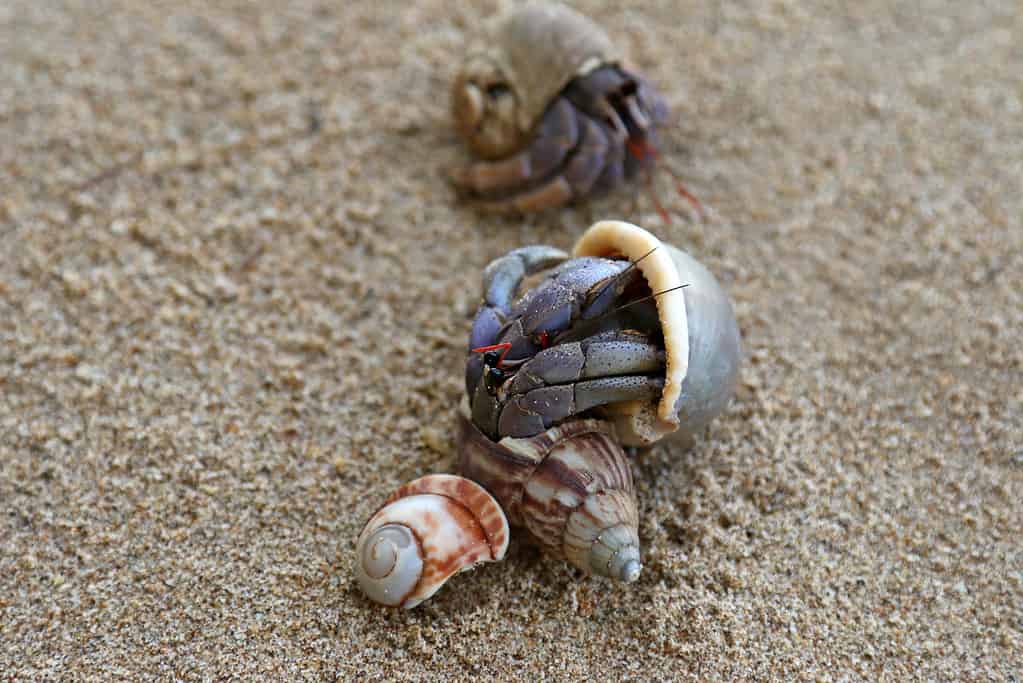
Hermit crabs are very picky when it comes to choosing a new shell.
©sasimoto/iStock via Getty Images
Unlike true crabs, hermit crabs are specially adapted to navigate the world while carrying their shells, which act like their own portable homes. In a study with Ecuadorian hermit crabs (Coenobita compressus), scientists wanted to know if the crabs understood that their chosen shell(s) changes how much space they take up in the world — and if they could figure out how to use different shell options to solve new problems.
Researchers made copies of the crabs’ favorite shells, with subtle modifications to the interior or exterior architecture. Carefully selecting only a few shells that would perfectly fit, they presented them to the crabs alongside alternative shells. The crabs then had to choose which shells would help them solve their problem — how to successfully escape from solitary confinement through an opening in their enclosure. To make their escape, the crabs had to choose a shell that they would not normally prefer but had the correct design to fit through the opening of the enclosure.
In multiple trials, the hermit crabs were willing to give up their preferred shells for the less desirable ones in order to escape. This suggests that the crabs are smart enough to solve new navigational problems by utilizing various shell options at their disposal.
Using Tools

Sometimes boxer crabs are called pom-pom crabs.
©Jung Hsuan/Shutterstock.com
Predators like octopuses, fish, and even other crabs, have many cunning methods to crack open even the toughest crab shells. To protect themselves, smart sponge crabs (Dromiidae) have developed their own creative defense. Instead of relying solely on their hard exoskeleton, sponge crabs carry camouflage with them wherever they go. They wear living sponges like hats to blend right into the ocean floor! Not only does this help hide the crab from predators, but the sponges also provide a second layer of defense. They have a unique chemical makeup that makes predators think twice before taking a bite!
Hawaiian boxer crabs (Lybia edmondsoni), on the other hand, prefer hand-held defensive accessories. Rather than wearing sponges, they carry venomous sea anemones in their claws like cheerleading pom poms! These tiny crabs – which grow only about half an inch wide — use the anemones to spar with one another and to protect themselves from other predators.
Social Intelligence
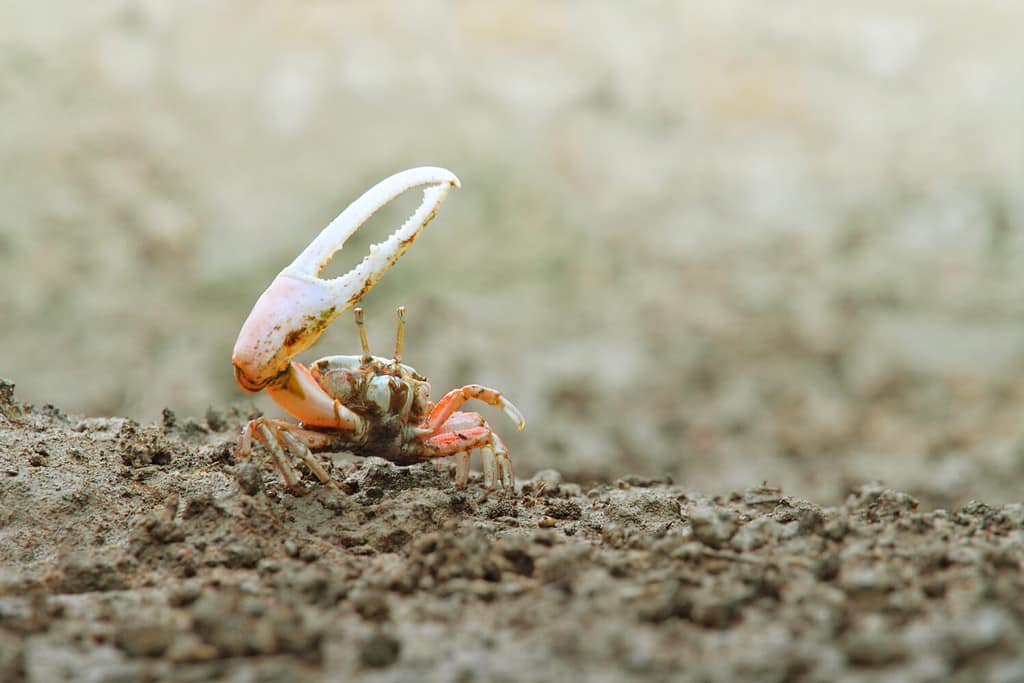
Fiddler crabs are very territorial.
©duangnapa_b/Shutterstock.com
Crabs can be quite perceptive when it comes to social relationships. The bromeliad crab, for example, takes excellent care of its babies. Female bromeliad crabs continue to feed and care for their babies for several months after they’ve hatched. They work hard to keep their babies comfortable and clean, removing debris from the water, adding oxygen, and even using empty snail shells to help balance pH levels.
Fiddler crabs also form communities with complex social dynamics and form alliances with their neighbors to help keep everyone safe. Different species of fiddler crabs may work together to help secure each other’s territories and protect their homes. Once boundaries and friendships are established between neighboring crabs, it is incredibly difficult for intruders to get to them. If one crab is attacked, his neighbors will leave their own homes to help him.
Crabs Can Sense and Feel Pain
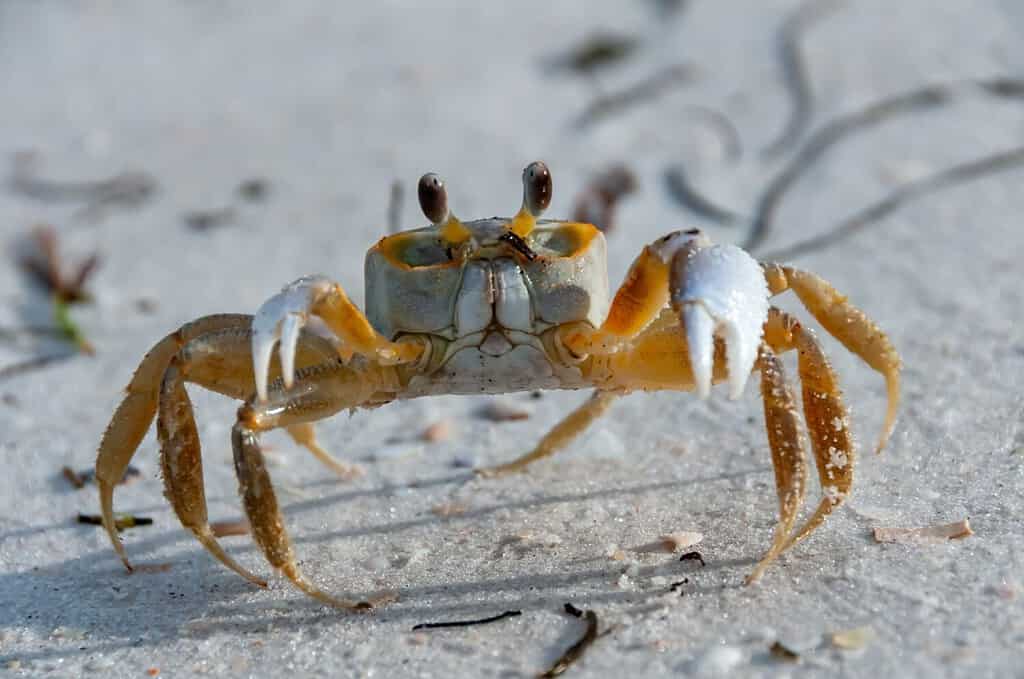
Recent studies demonstrate that crabs are sentient creatures.
©Oleg Kovtun Hydrobio/Shutterstock.com
It’s hard to truly measure “pain” since it is a subjective experience. In addition, animals cannot tell us how they are feeling, so researchers can only observe how they react to certain stimuli. However, beyond simply recognizing and staying away from danger, scientists suggest that crabs can also sense and feel pain, anxiety, and many other feelings.
The photo featured at the top of this post is © iStock.com/ANDREYGUDKOV
Thank you for reading! Have some feedback for us? Contact the AZ Animals editorial team.






